Three
LITERARY FICTION AND
SCIENCE FICTION
In the southern part of the Alabama Hills, one will venture along Horseshoe Meadow Road, along Whitney Portal Road, and past a private ranch on Lubkin Canyon Road and across a bridge, which both were significant to early Western literary fiction.
The Lubkin Ranch, which is private property, was the site of the original Bar 20 Ranch seen in film. The Bar 20 Ranch was the fictional home of the famous Hopalong Cassidy. In 1905, Clarence E. Mulford introduced Cassidy in a short story called “The Fight at Buckskin.” Hopalong Cassidy, played by William Boyd, was the most marketed cowboy star, with merchandise including toys, and surpassed the fame of his predecessor, Tom Mix.
Also along Horseshoe Meadow Road, the explorer will find a monument to where the Gunga Din temple stood in the 1939 RKO classic. In the western part of the Alabama Hills, one will find sites called Whitney Portal Road, and Movie Road.
This area once saw a galloping Roman general, a giant killer worm, a mysterious temple, and a town called Red Dog. This location provided many camera angles and terrain that had a futuristic element to it. It was near here that Russell Crowe rode and camped in the film Gladiator. Another epic, Cecil B. Demille’s Samson and Delilah was shot near here.
Due to their breathtaking combination of ancient geological formations, rolling hills, desert flatlands, boulder-strewn landscapes, and mountainous backdrops, the Alabama Hills are an ideal location for science fiction films.
Near here was where Robert Downey Jr., in Iron Man, shows off his successful experiment to the military and where Kevin Bacon evades a worm-like creature in the science fiction adventure Tremors.
Red Dog, a Western set built in the early days, was located along Whitney Portal Road near Horseshow Meadow Road; the intersection once stood where a wooden bridge now suspends the road. The town of Red Dog was complete with a saloon called the Red Dog saloon.
Camel Spiders, a 2011 film about killer spiders, was shot near Movie Road and the Anchor Ranch, which was once was invaded on film by a flying saucer. Speaking of camels, the 1953 film Desert Legion featured camels in a scene near the site of the Gunga Din temple monument site.
Science fiction and fantasy films have captivated the imagination and are a part of popular culture that fuels interest best when filmed at a place of wonder like the Alabama Hills.
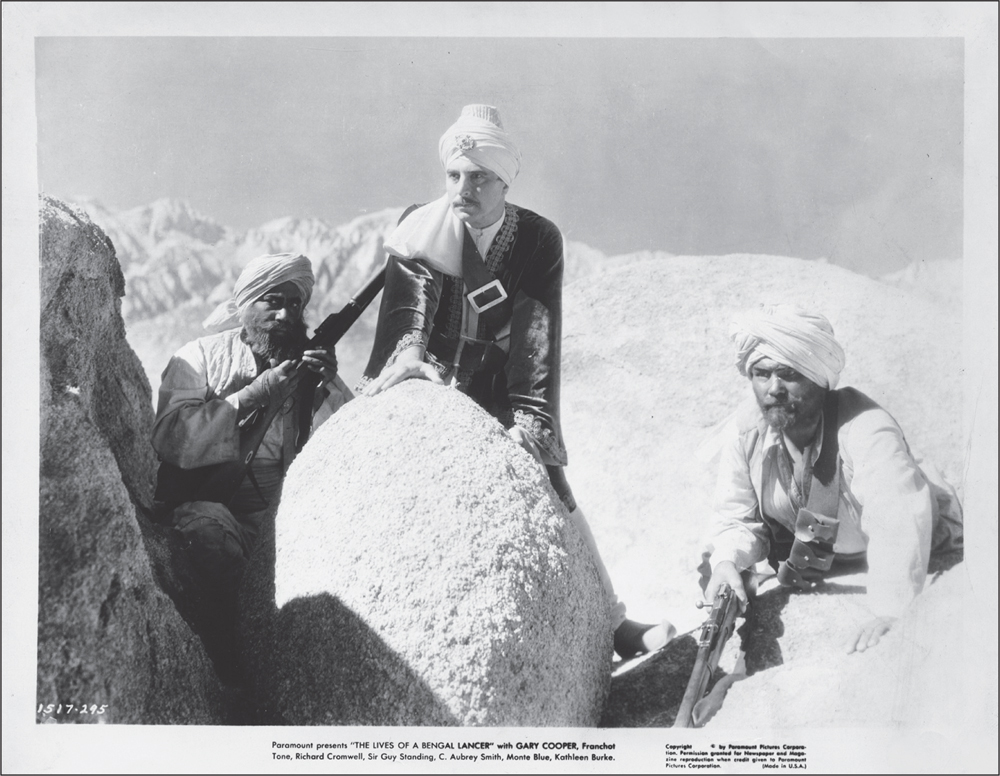
The Lives of a Bengal Lancer (1935) is an excellent example of an Eastern literary film. Starring Gary Cooper and Douglass Dumbrille, it was based on the 1930 novel of the same name by Francis Yeats-Brown and was shot in many locations in the Alabama Hills. The areas known as Background Rocks and Gene Autry Rock, as well as the burial site in Rawhide (1951), can all be seen in this film.
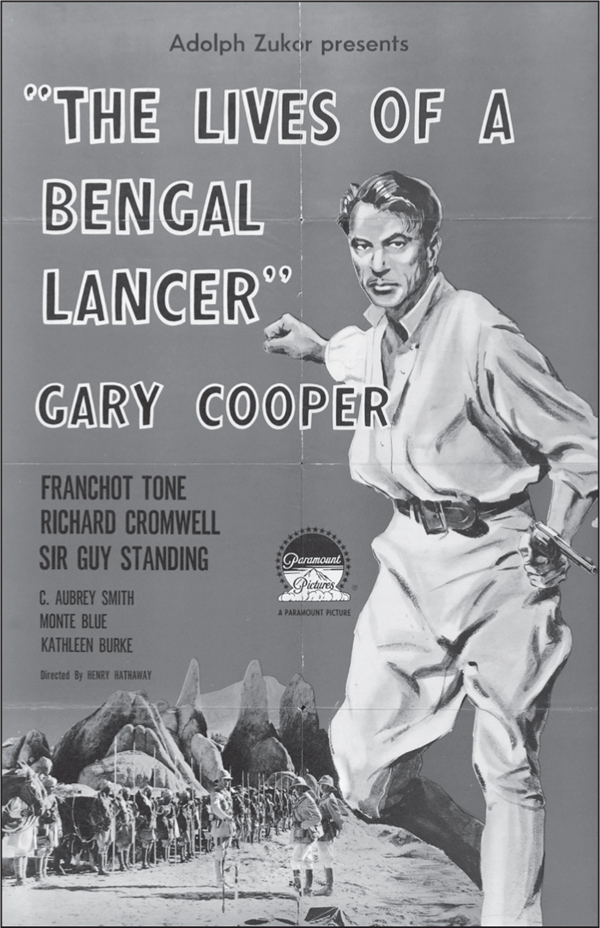
This is the lobby card for Paramount’s The Lives of a Bengal Lancer.
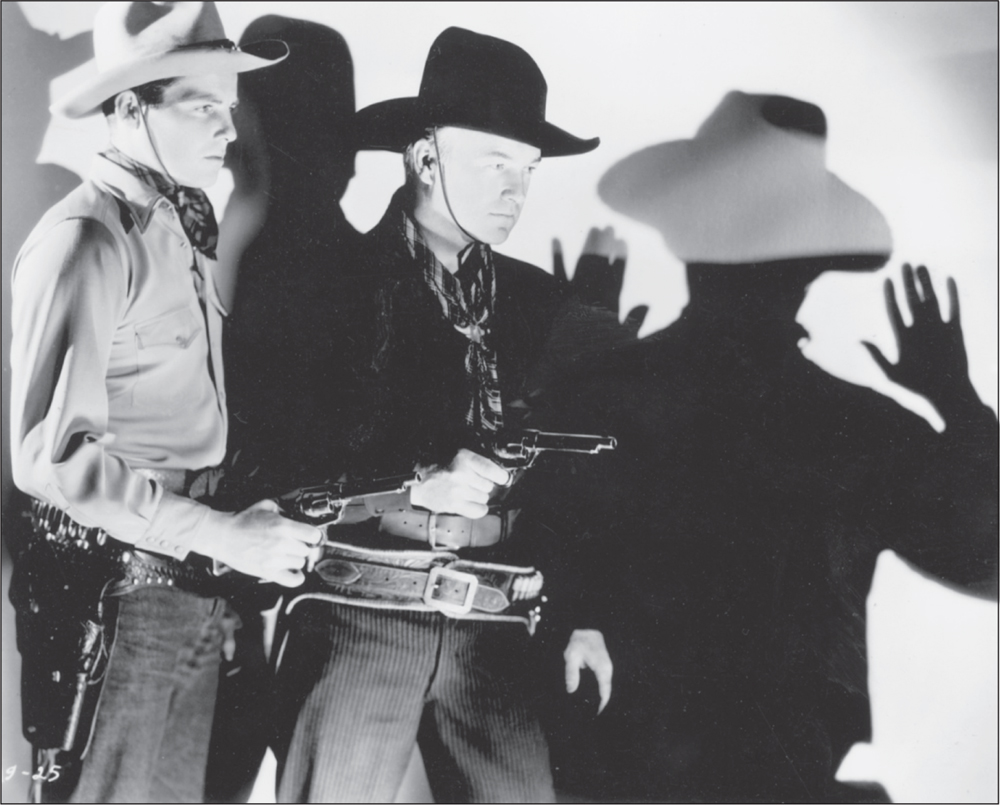
Clarence E. Mulford’s character Hopalong Cassidy was portrayed by William Boyd, shown here in the black hat. Black hats in Westerns were symbolic of the villain, but not so for Hopalong Cassidy. Boyd loved bubble baths and would often sneak over to the Dow Hotel in nearby Lone Pine to soak after a hard day’s work.
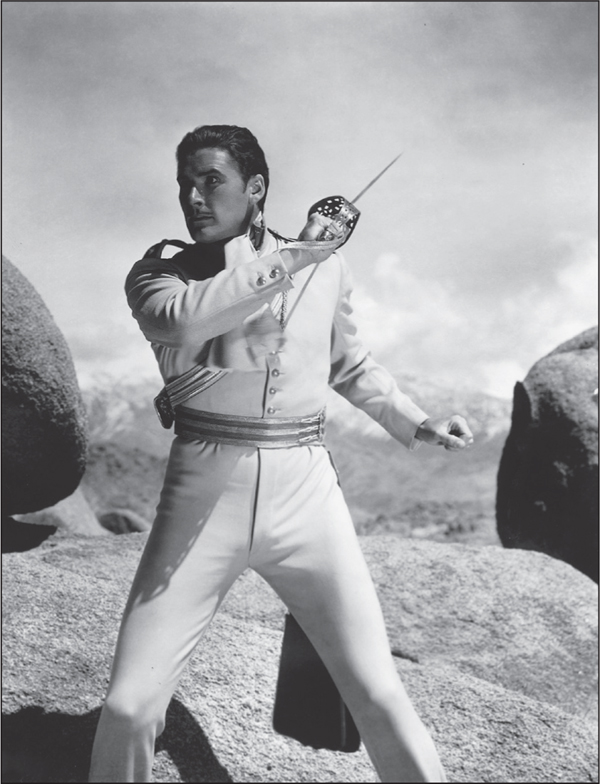
This wonderful publicity shot of Errol Flynn shows the Eastern Sierras in the background. Flynn made two films in the area: Charge of the Light Brigade (1936) and Kim (1950). Flynn disliked the wind and dust of the Alabama Hills and was prone to allergies. The sword in this photograph can be viewed at the Lone Pine Film History Museum, where it is on loan from the author.
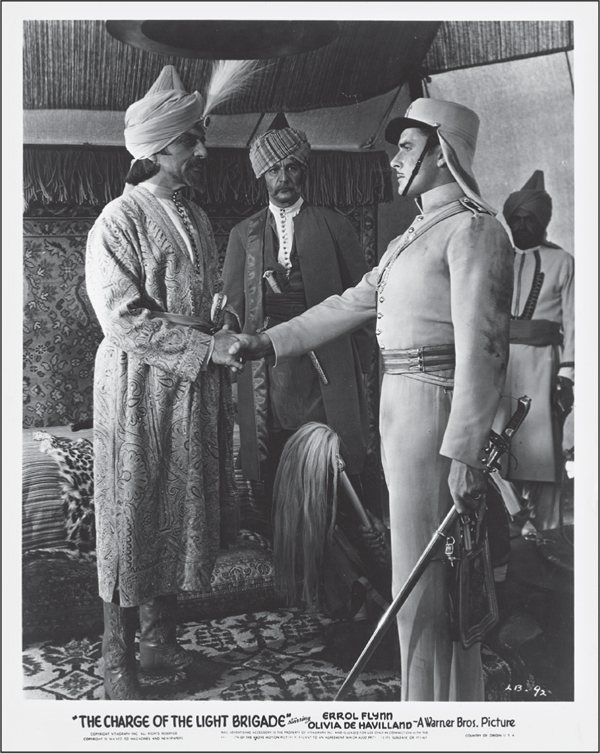
Errol Flynn is seen here in The Charge of the Light Brigade (1936), based on a poem by Alfred, Lord Tennyson. During filming, Flynn was almost deported for an expired visa, helped fight a hotel fire, and got into a brawl in which he defended a dog against mistreatment he had observed. Flynn now rests under a half-naked statue of a woman in peaceful Forest Lawn Cemetery in Glendale, California.
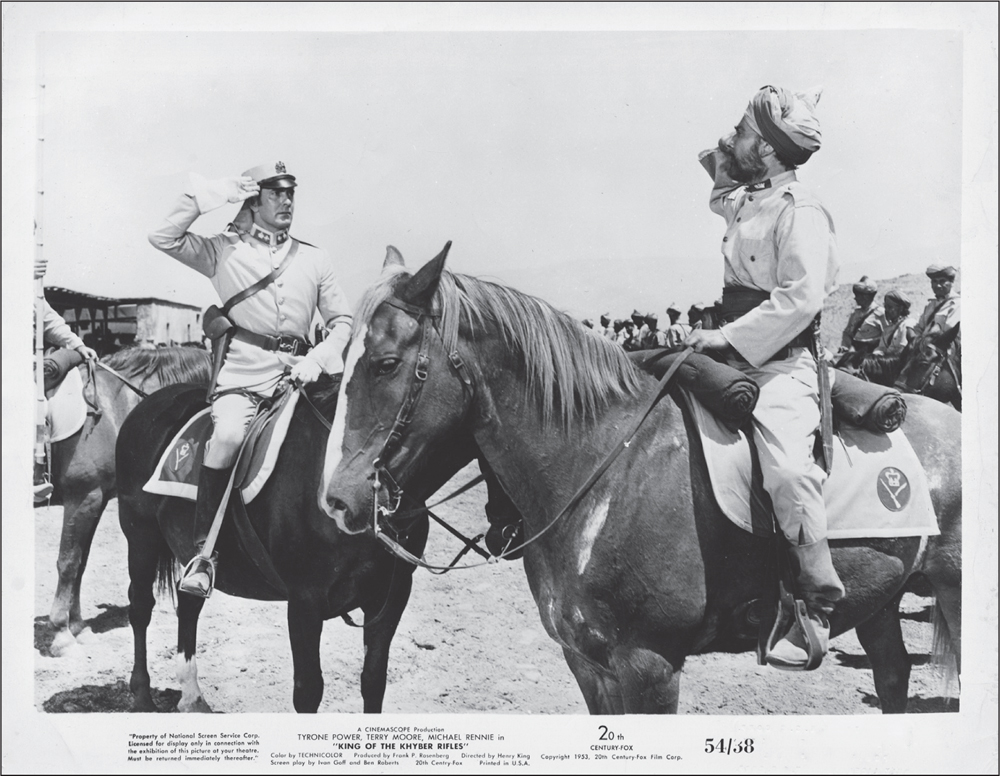
Tyrone Power (left) salutes in King of the Khyber Rifles (1953). Power would often pretend to blend in with the locals and play practical jokes, such as pretending to be a waiter or hotel clerk and seeing if people would notice him. He starred in Brigham Young (1940) and Rawhide (1951), both filmed in the Alabama Hills. He rests at Hollywood Forever Cemetery in Hollywood, California.
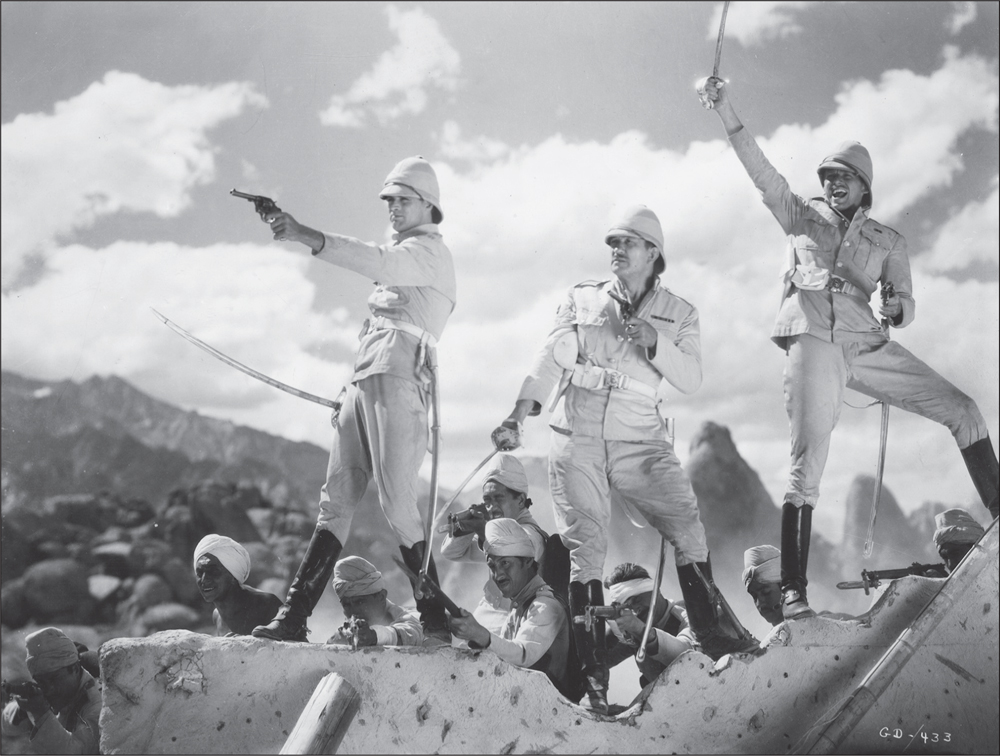
The critically acclaimed RKO Radio Pictures film Gunga Din (1939) is one of the most recognizable and noteworthy shot in the Alabama Hills. Adapted from an 1892 poem by Rudyard Kipling, this film was a large production and included elephants, a temple, a bridge, and hundreds of horses. Shown here are, from left to right, stars Cary Grant, Victor McLaglen, and Douglas Fairbanks Jr.
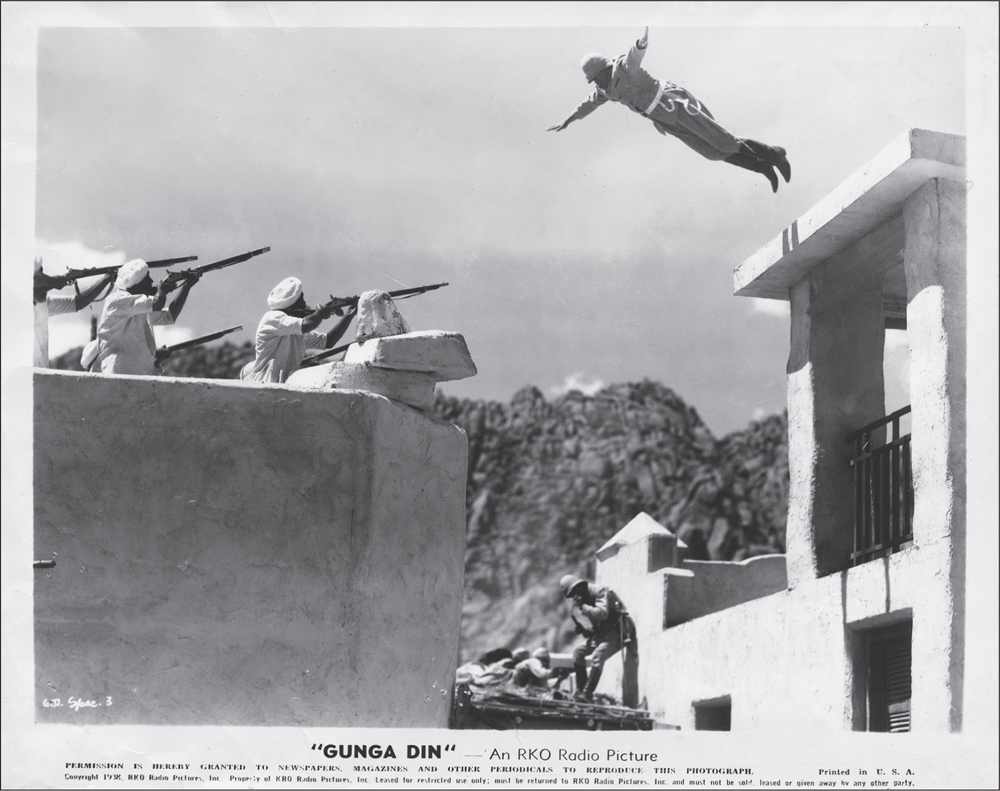
Victor McLaglen, a future founder of motorcycle clubs such as Victor McLaglen Motor Corps, is jumping off the wall of the set that was located in the northern section of the Alabama Hills. The movie crew and prop department of Gunga Din built Tantrapur in the Alabama Hills. The town no longer exists, but the location is easy to find northwest of Movie Road. When the set was torn down, parts of the material went to build the Anchor Ranch near Highway 395 in Lone Pine, California.
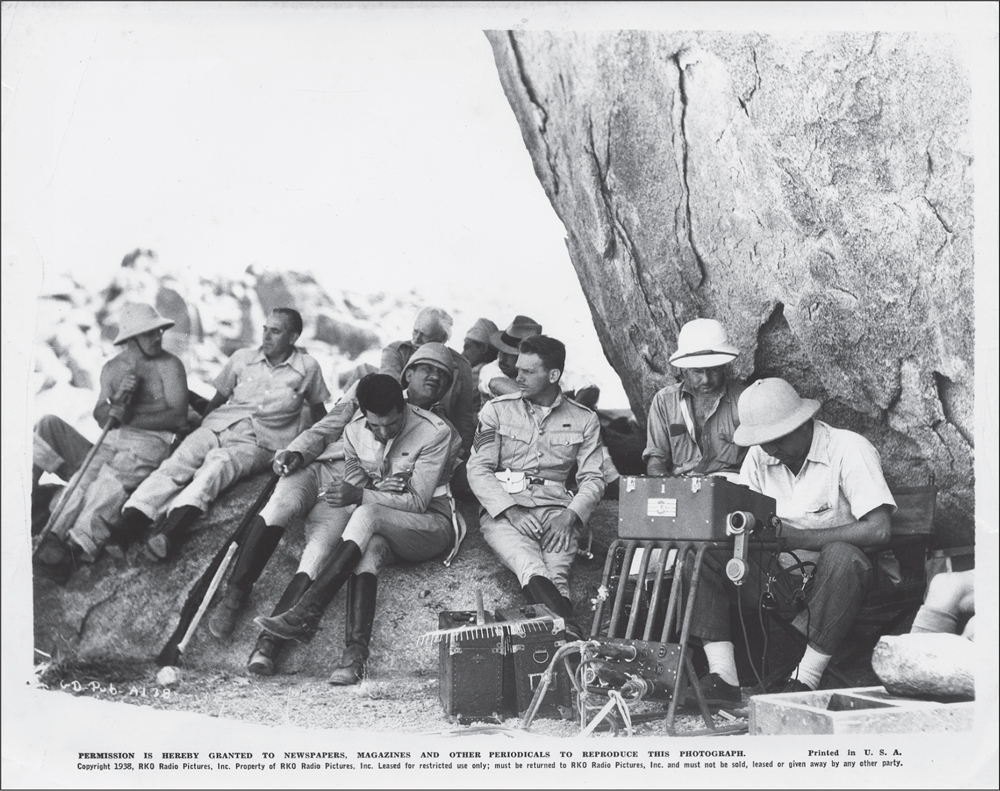
This very rare candid photograph shows the cast of Gunga Din seeking shelter under a huge boulder. The heat during filming was called “intense.” The production took a toll on military veterans such as Victor McLaglen (third from left, behind Cary Grant) and Douglas Fairbanks (fifth from left). All three stars are smoking a cigarette, despite the heat. Douglas Fairbanks Jr. said in an interview that he suffered more injuries making movies like Gunga Din than during six years of military service (five of which were in combat).
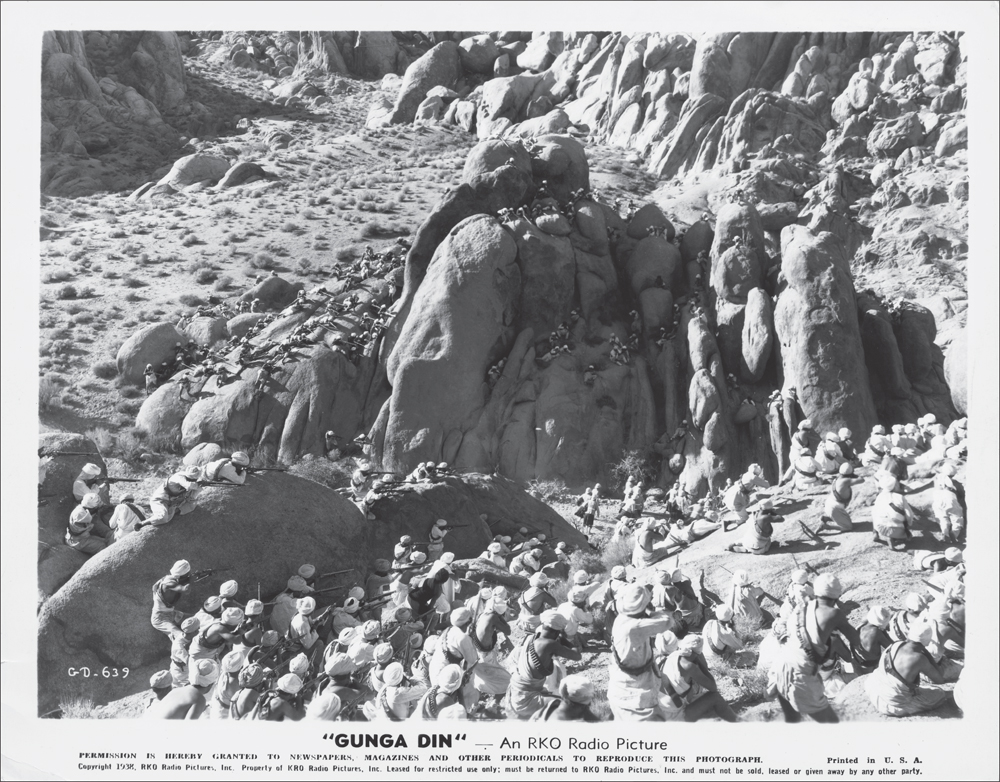
This view of the location for the climactic battle scene in Gunga Din (1939) shows the effort of thousands of extras and really gives the scope of how the Alabama Hills worked perfectly for a master epic. Note the soldiers scrambling among the rocks.
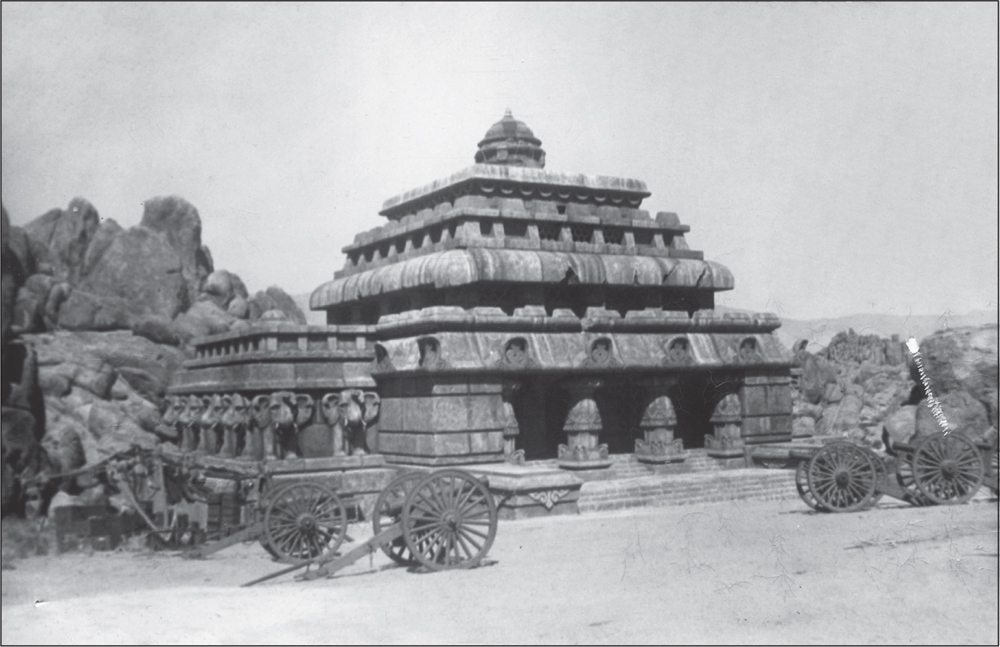
The image above is from a photograph that was glued onto a postcard and mailed during production. It shows the massive temple from Gunga Din (1939) that was located just off Horseshoe Meadow Road. There is now a marker designating the temple site. Below is the back of the postcard that was mailed on October 5, 1938, at 10:00 a.m. from Lone Pine, California.
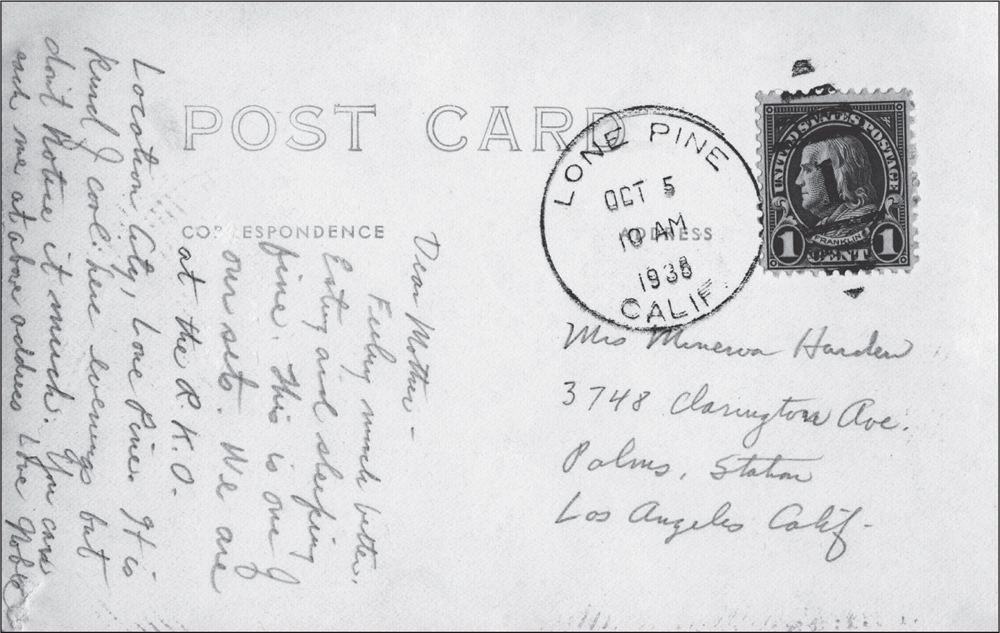
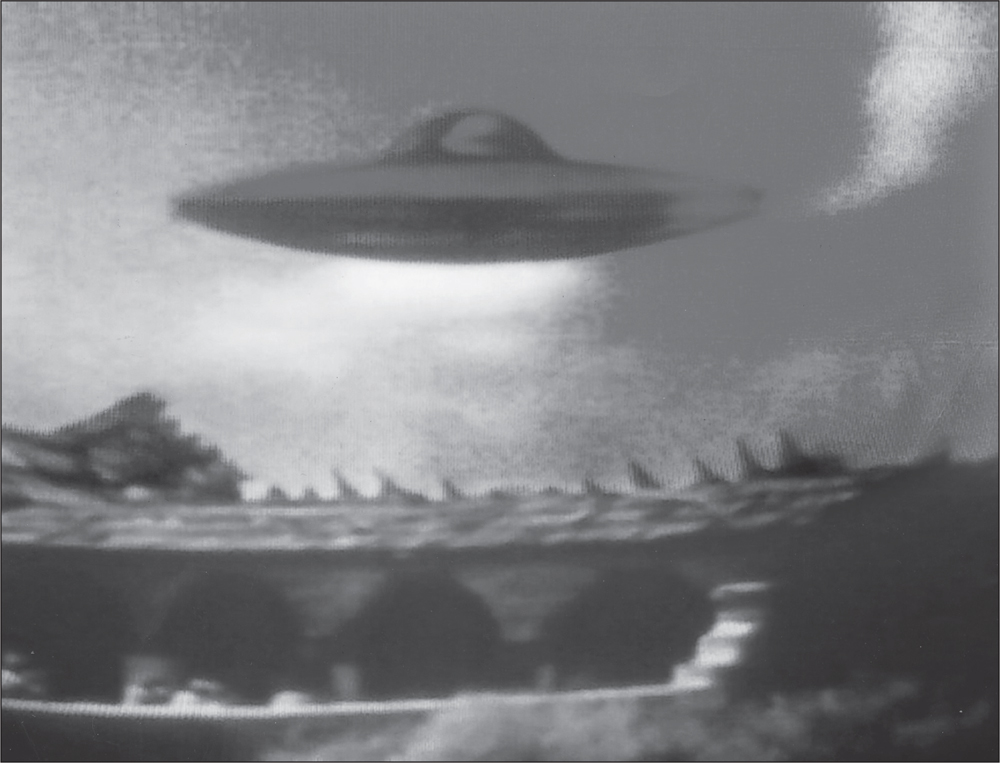
Bamboo Saucer (1968) is a great cult science fiction classic about a jet pilot who sees a UFO and follows a lead to find it in remote China. It is filled with great shots of a flying saucer and of men shooting Tommy guns in the Alabama Hills. This photograph shows a UFO flying over the Anchor Ranch located just off Highway 395, which was built from the old Gunga Din sets. Only a small outer wall remains of this once-massive structure.
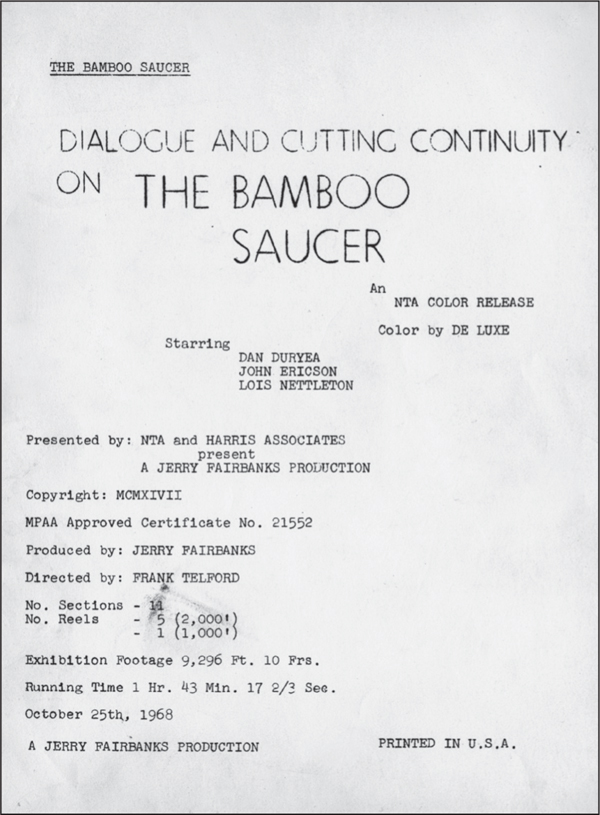
This is the front page of the script from Bamboo Saucer. The script is generally the first thing a director or actor reads before doing a film. This is an excellent example of how the movie-making process all starts.
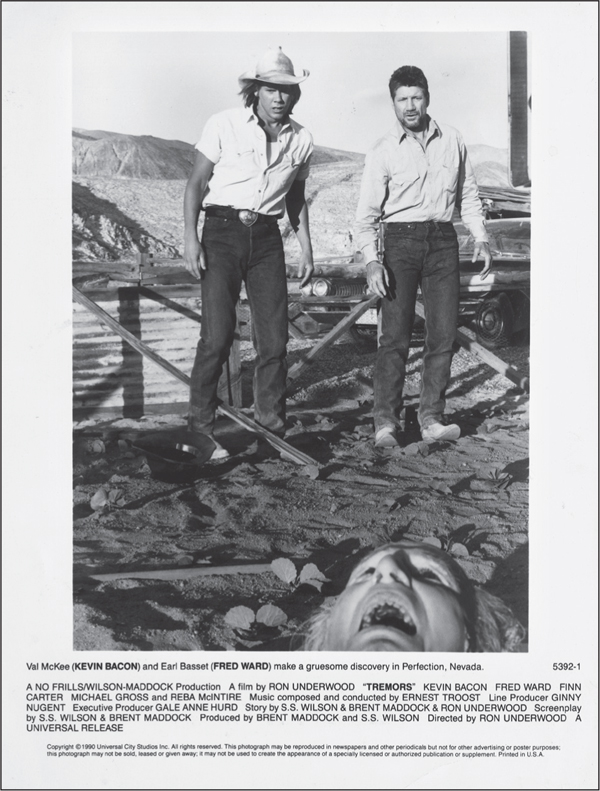
Tremors (1990), starring Kevin Bacon and Fred Ward, was filmed all over the Owen Valley, including the town of Keeler, “cactus flats,” and in the Alabama Hills. It featured a killer worm creature that entertained audiences and still remains a classic science fiction film. Country-Western star Reba McEntire is seen in her first role.
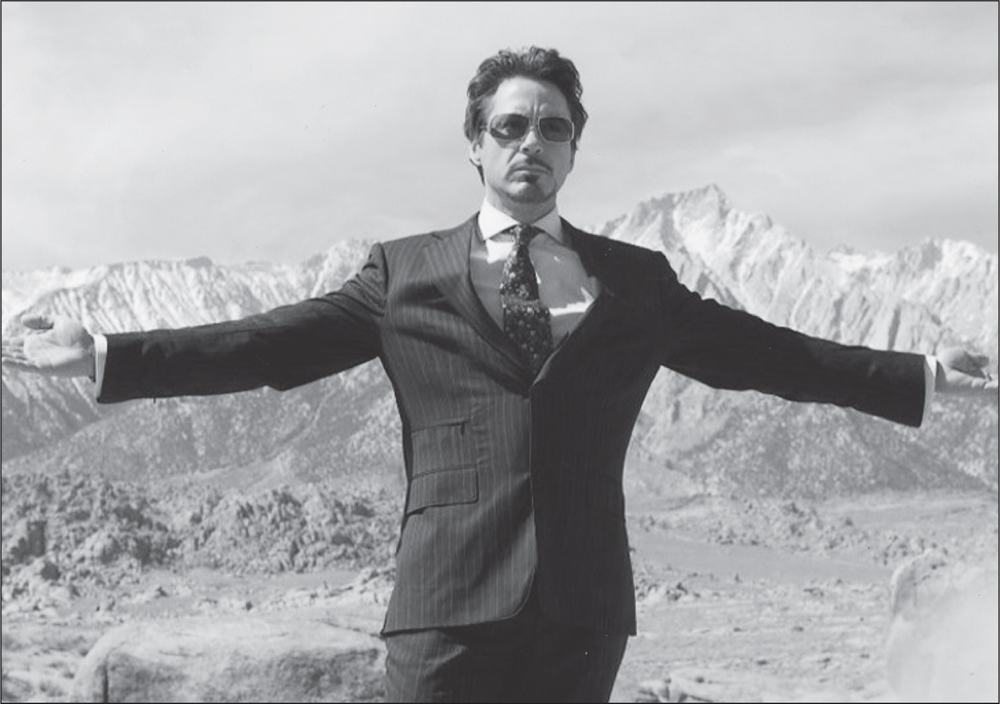
Iron Man (2008) and Chaplin (1992), both starring Robert Downey Jr., were filmed in “the rocks.” Chaplin was filmed along Movie Road, and Iron Man was filmed in the extreme northern area, known as the “bomb testing site.” Other films in this area include Transformers (2007), Tremors, and Man of Steel (2013). Russell Crowe’s character is seen camping in this area in Gladiator (2000), Demi Moore was filmed here in G.I. Jane, and Jamie Foxx is seen riding away at the end of Django Unchained (2012).















